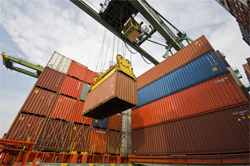Port traffic shows mixed results
Tuesday, July 2, 2013

Of the four main Central American ports, only Limón in Costa Rica showed a strong increase in cargo traffic last year, bucking a trend of slow growth in Latin America, according to the UN Economic Commission for Latin America and the Caribbean.
Limón, Honduras’ Puerto Cortes, and Panama’s twin ports of Balboa on the Pacific coast and Colón in the Caribbean, are the only ones big enough to be included in the report.
Limón, ranked 14th in importance by ECLAC, last year moved just over 1 million TEUs (shipments are measured in Twenty-foot Equivalent Units), a 16 percent increase over the previous year.
Balboa and Colón registered weak growth of 2.2 percent and 4.4 per cent, respectively.
The Panamanian ports are Latin America’s busiest.
Balboa last year shipped 3.5 million TEUs, while Colón moved 3.3 million.
For its part, Puerto Cortés at 24 in the ranking and less than 600,000 TEUs, reported a decline in traffic of 0.6 percent.
For Latin America overall, port traffic increased by only 4.3 percent last year, compared to 15.9 percent in 2010 and 13.9 percent in 2011.
Recession in Europe and slow growth in the United States and China contributed to the decline, according to ECLAC.
Other ports which trended upward last year included But Colombia's Cartagena, the fourth busiest, which showed 19 percent growth, to 2.2 million TEUs, and Mexico's Manzanillo, with 1.9 million TEUs and 10 percent growth.
Latin America has a long way to go in port development.
The globe’s biggest eight ports are Asian, of which six are Chinese, led by Shanghai with almost 32 million TEUs, according to 2011 data from the World Shipping Council.
With just under 12 million TEUs shipped, Rotterdam is first in Europe and tenth in the world.
But Rotterdam serves not just the Netherlands but all of Europe, which could be a guide
for Central America, which operates a large number of small ports, whose diseconomies of scale increase the price of exported goods, as well the price which consumers in the region pay for imported products.
